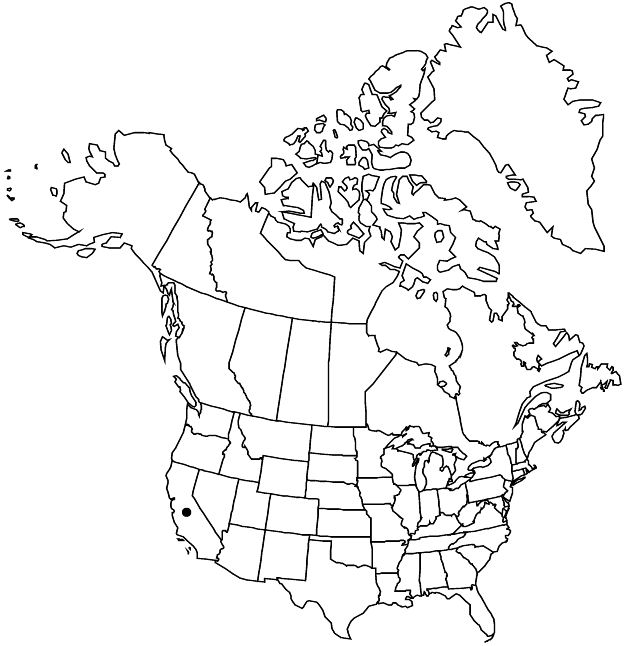Euphorbia hooveri
Proc. Biol. Soc. Wash. 53: 9. 1940.
Herbs, annual, with slender to slightly thickened taproot. Stems prostrate, occasionally mat-forming, 4–10 cm, glabrous. Leaves opposite; stipules distinct or connate at base, deeply laciniate into numerous subulate to filiform segments, 0.3–1.3 mm, glabrous; petiole 0–0.5 mm, glabrous; blade broadly ovate, broadly oblong or suborbiculate, 3–7 × 2–5.5 mm, base asymmetric, hemiamplexicaulous, margin sharply serrulate to denticulate, teeth whitish and occasionally setaelike at apex, apex obtuse, surfaces papillate, glabrous; 3-veined from base, usually only midvein conspicuous. Cyathia solitary at distal nodes; peduncle 0.5 mm, stout. Involucre campanulate, 1.2–1.5 × 1.5–2.2 mm, papillate; glands 4, yellow to reddish, subcircular to oblong, 0.4–0.5 × 0.5–0.7 mm; appendages white to pink, 0.3–0.9 × 0.7–1.6 mm, divided into 4–6 narrowly triangular, acute segments, these occasionally 2-fid, margins entire. Staminate flowers 25–35. Pistillate flowers: ovary glabrous; styles 1.8–2.6 mm, unbranched, filiform. Capsules oblate, 1.5–1.7 × 1.8–2.2 mm, glabrous; columella 1.2–1.4 mm. Seeds gray to light brown, ovoid, inconspicuously 4-angled in cross section, 1.2–1.6 × 1–1.1 mm, rugose.
Phenology: Flowering and fruiting summer–fall.
Habitat: Drying mudflats of vernal pools in grasslands and woodlands.
Elevation: 20–200 m.
Discussion
Euphorbia hooveri is federally listed as threatened; its populations are being affected severely by habitat loss and the invasion of exotic species. The species is endemic to vernal pools in six counties in the Central Valley of California. Molecular data show that E. hooveri is a hybrid species, closely related to E. albomarginata and E. serpens (Y. Yang and P. E. Berry 2011).
Selected References
None.
